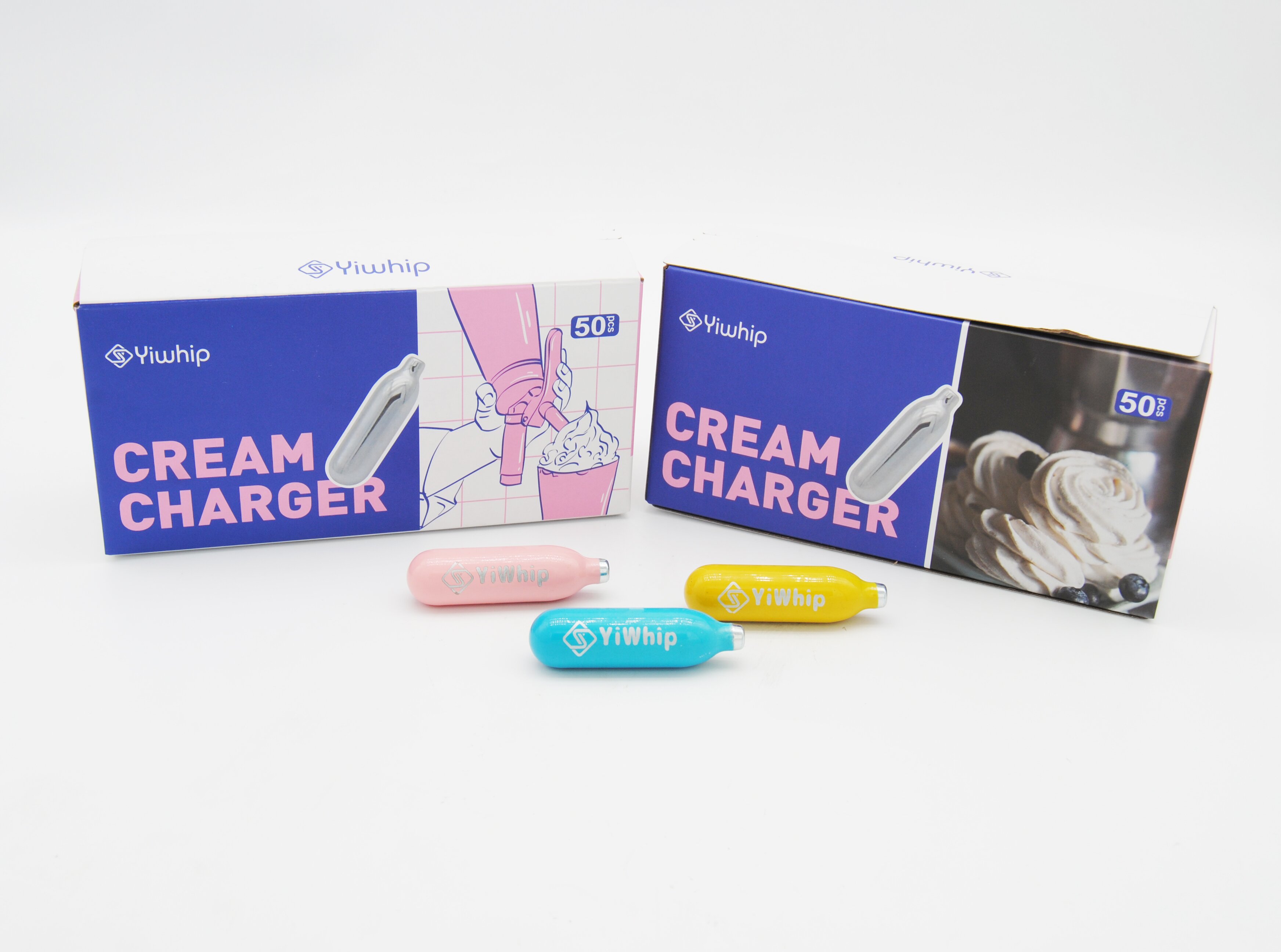The Rise of Whipped Cream Chargers in the US Dessert Industry
In recent years, the **popularity of whipped cream chargers** has seen a steady rise across the United States dessert sector. These nitrous oxide (N2O)–infused canisters, typically used to rapidly aerate and dispense whipped cream through dispensers known as whipped cream dispensers or "cream whippers," have become household and commercial staples in many American bakeries, coffee shops, and fine dining venues. What makes them particularly compelling is not just their functionality, but also the versatility and efficiency they offer in a fast-moving market. The trend aligns well with modern expectations — quick prep, visual appeal, consistent texture, and portability. As consumer demand for artisan-style toppings and gourmet presentation rises, these cream chargers are no longer seen as niche gadgets but essential culinary instruments. However, the meteoric rise in popularity hasn’t come without scrutiny or complications — from regulatory shifts and supply challenges, to misuse by individuals outside their intended function.Pullout Box: Key Factors Behind Cream Charger Demand:
- Ease of preparation for desserts and specialty drinks.
- Versatile tool applicable in home, restaurant, or food truck environments.
- Growth in coffee culture, where toppings like whipped cold foam use these systems regularly.
- Increase in do-it-yourself (DIY) trends amplifies sales in consumer-driven kitchens.
Aesthetic Expectations Drive Culinary Creativity
Modern consumers don’t just eat with taste; they consume visually. Platforms such as Instagram have dramatically reshaped dessert standards, turning ordinary plates into photo-perfect displays. This is especially true with desserts, which heavily rely on presentation. Here, **whipped cream chargers offer distinct artistic value** by enabling chefs and home bakers to add flirty clouds of whipped foam, swirls with edible glitter finishes, or layered effects atop beverages or confections with little effort. Coffee shop culture has taken full advantage of this. Specialty cold brew, cappuccino art using foamy heads created with dispensers, nitrogen-enriched milk textures — all benefit significantly from the integration of cream charger-powered equipment. Baristas at boutique cafes now compete over “foam art" much like latte artists did a decade earlier. The aesthetic edge isn’t merely visual — the texture produced by properly aerated whipped cream surpasses that of manually whisked blends. Nitrous-oxidized foam creates silkier layers, less separation under heat or acidity conditions, and enhanced flavor diffusion due to tiny trapped gas pockets.Balancing Safety & Ethics Across Commercial Sectors
Despite being safe when used responsibly, the accessibility and ease of N2O canisters present **notable challenges**. There have been growing concerns around accidental intoxication by inhaling nitrous oxide gas from the cartridges improperly. Incidents of young adults seeking recreational euphoric effects — often referred to as getting ‘laughing gas highs’ — pose both ethical dilemmas and safety threats. In response, states like Illinois and Texas recently tightened access regulations for large-scale distributors of cream chargers. Retail giants including Walmart and Amazon now flag certain keywords associated with bulk purchases online. Though legal restrictions for private ownership still remain minimal, the pressure from health institutions is mounting — particularly concerning minors. Additionally, industry players face environmental questions. While the amount of nitrous oxide emitted during food preparation is relatively minute compared to agricultural sources or fossil fuel emissions, nitrous oxide remains a highly potent greenhouse gas with over 300 times more impact than carbon dioxide. Hence, eco-conscious consumers, and even policymakers, begin to scrutinize alternatives — prompting research into sustainable options such as compressed carbon dioxide solutions and mechanical pressuring systems.Leveraging Tech Innovation in Food Production Tools
Aided by rising kitchen technology investments, the future of whipper-based dessert production is evolving quickly. **Advanced whipped cream dispenser designs** with built-in digital timers and temperature regulators are already emerging in niche appliance markets. Manufacturers are exploring smart versions compatible with Bluetooth-controlled foam output levels for precision catering. For larger cafés or catering outfits, automation-assisted dispensers can serve hundreds in real-time events. Some companies even combine traditional whipping techniques with modular AI algorithms to analyze user behavior data and predict optimal consistency ratios based on altitude, cream fat content, temperature variations, and humidity level — an area previously limited largely to industrial laboratories. This kind of tech-enabled innovation could redefine professional kitchens — not unlike sous-vide ovens once did — pushing chefs towards higher-standard creations while simultaneously reducing waste or labor-intensive prep work.Evaluating Consumer Behavior and Market Trends in Pakistan’s Appetite for Cream Chargers
Interestingly, as awareness and appreciation of advanced pastry tools grow globally, countries beyond Europe and North America, particularly in South Asia, see rising interest in tools such as whipped cream siphons. This shift aligns directly with evolving tastes among younger demographics, expanding coffee cultures akin to those flourishing elsewhere. Take for example **Pakistan**: once characterized only by local sweets shops selling gulab jamuns and jalebis at traditional outlets, cities such Islamabad and Karachi now host urban patisseries experimenting with Western fusion desserts topped by stabilized creams. In fact, some premium lounges now feature signature beverages finished precisely by automated whipped cream systems fueled by nitrous-charged canisters. Moreover, social influence is shaping aspirations among local entrepreneurs venturing into upscale café operations, many inspired by global café aesthetics. While imported units may be more costly than generic versions currently flooding online platforms, quality and reliability concerns push serious operators towards branded whip systems offering greater hygiene and stability. This subtle shift signals potential early growth stages of cream chargers adoption within Pakistan — possibly leading to increased local manufacturing and retail activity down the road.Digital Shopping Behaviors Impact Cream Tool Accessibility in Emerging Markets Like Pakistan
- Online importers advertising premium nitro-canisters via Facebook ads and e-commerce listings.
- YouTubers reviewing whipping performance differences across brands.
- Blogger communities comparing DIY recipes with and without cream charging devices.

